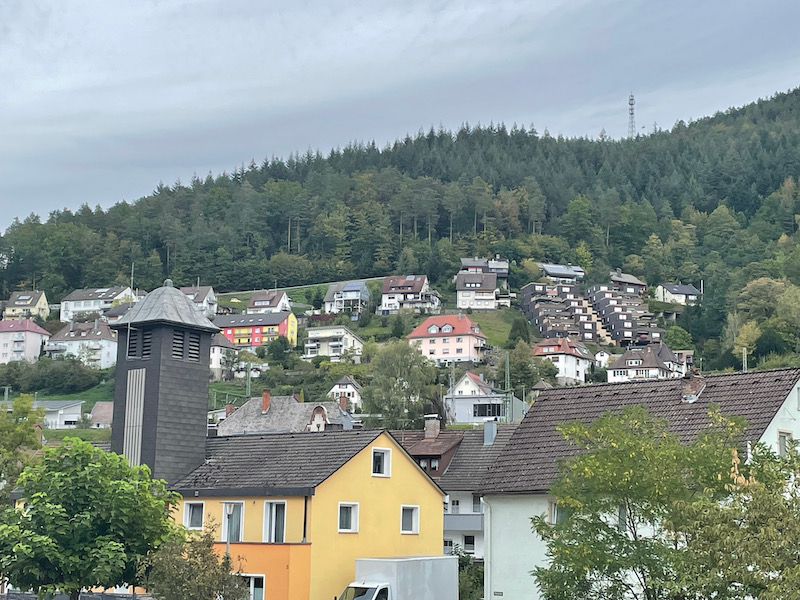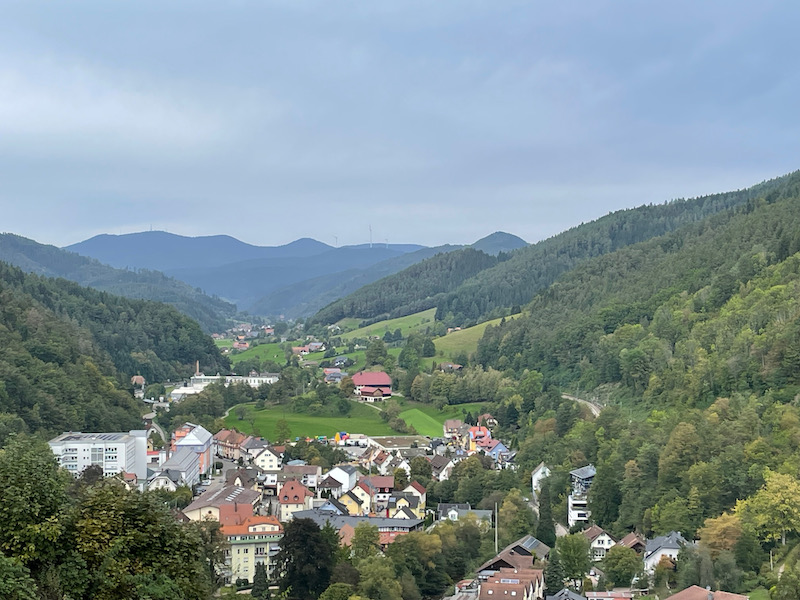Our Blog - Germany 2023 - Hornberg, Germany
There have been people living in this area since Roman times, since an important path between Strasbourg and Constance ran through here. We decided to spend a little time one afternoon here, since it looked like an interesting little town. I won't have much detail on things in town since the tourist office didn't have any tourist information in English and there isn't much online, either.
There are definitely some nice old-style buildings. The first 2 pictures are of the Adler Hotel and Restaurant with another of those great wrought-iron business signs.
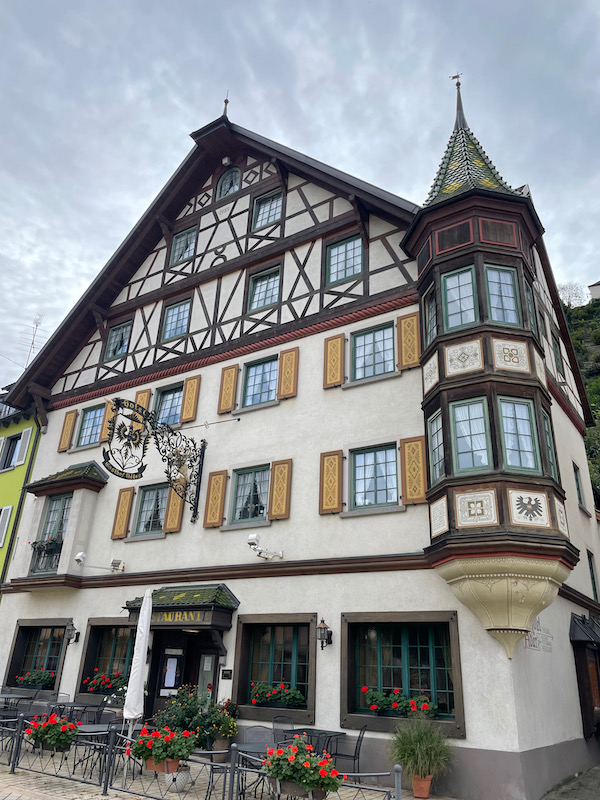
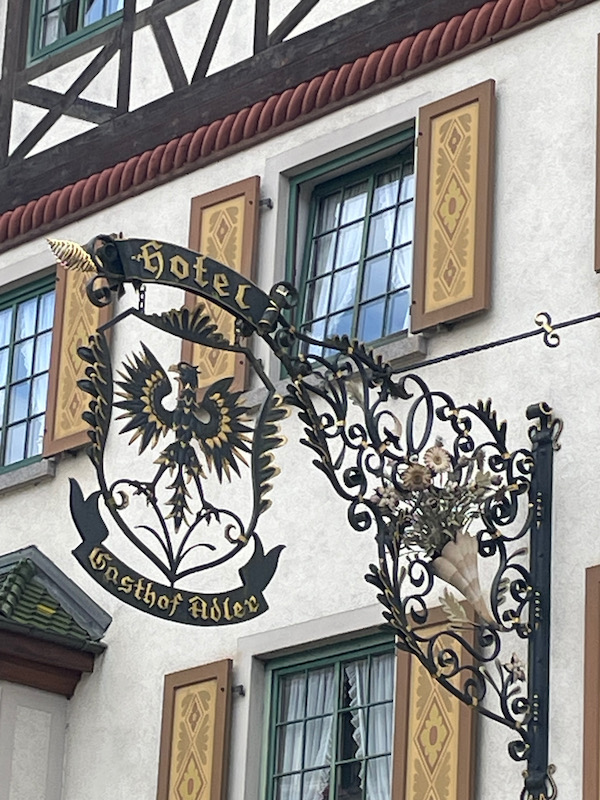
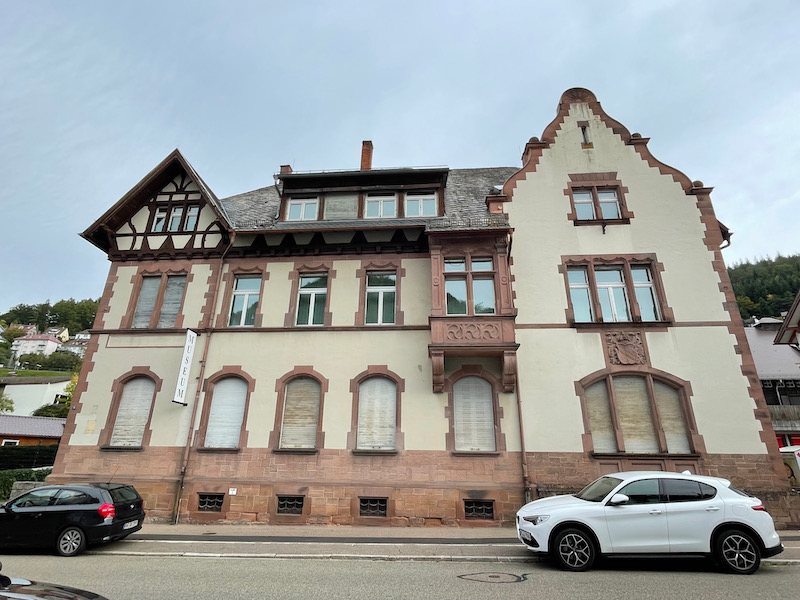
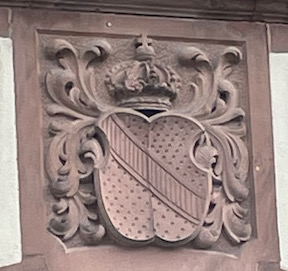
This is the Rathaus, or town hall. The first town hall was built here in 1498, while this one is a bit newer (constructed by Duke Ulrich von Württemberg in 1533/34). There is a Fresco on the side that shows 4 soldiers around the coat of arms of the town.
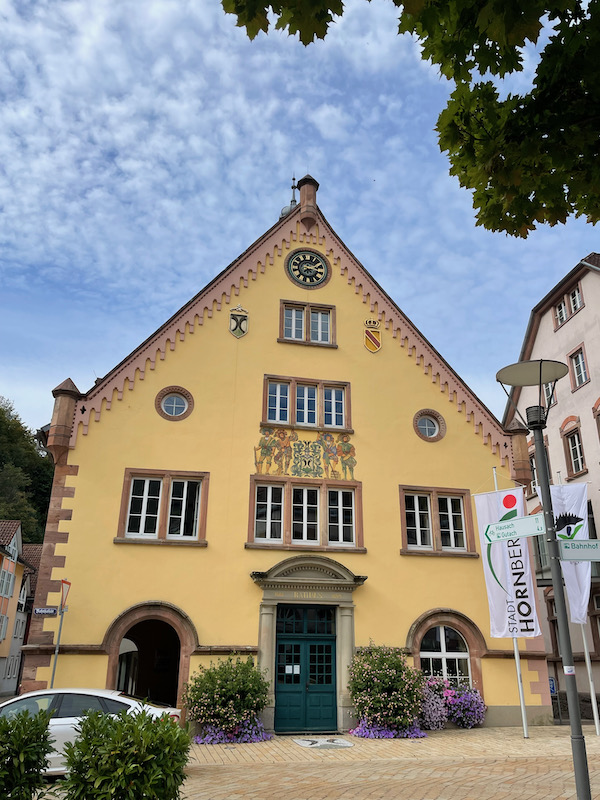
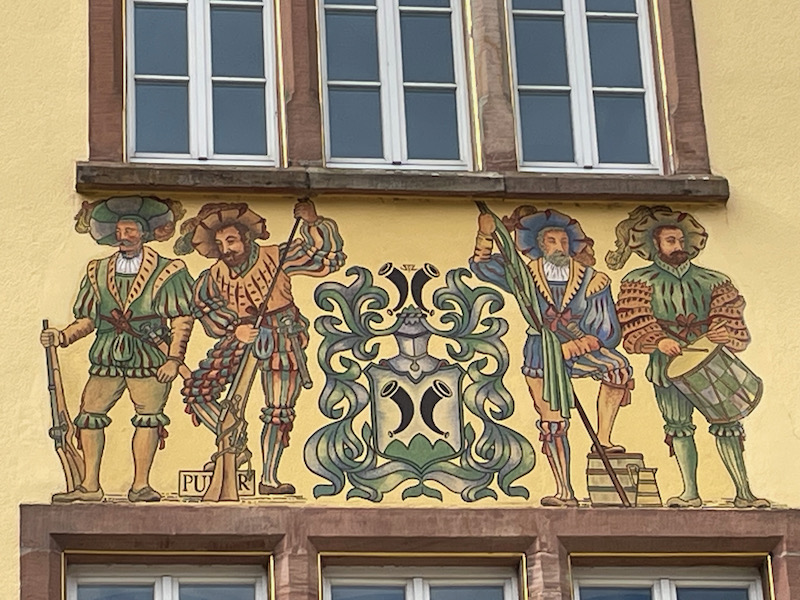
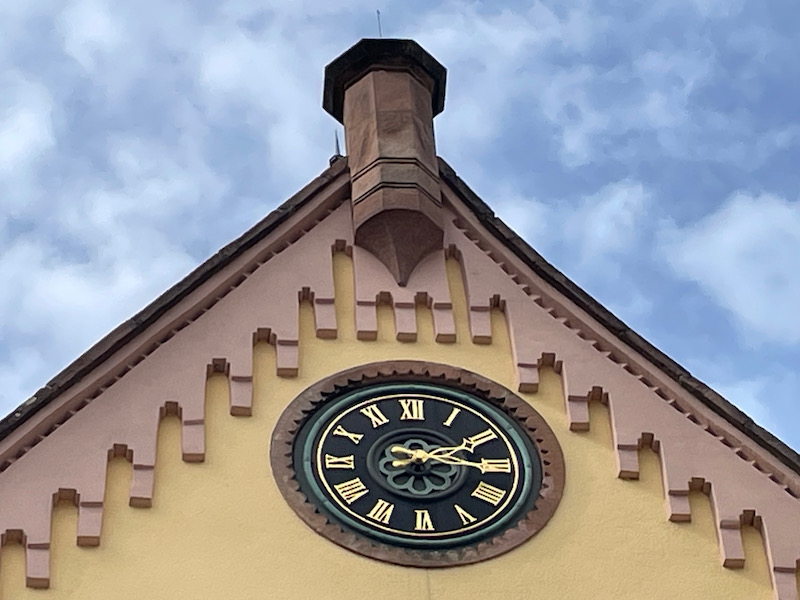
A traveling traders' cart, like this one here, influenced the fate of the residents in 1564. The lookout on the castle mistook the cart, enshrouded in a cloud of dust, for the duke's entourage as it approached. The traders then had to be "bribed" through purchases to stop them from telling neighboring towns about the embarrassing mix-up.
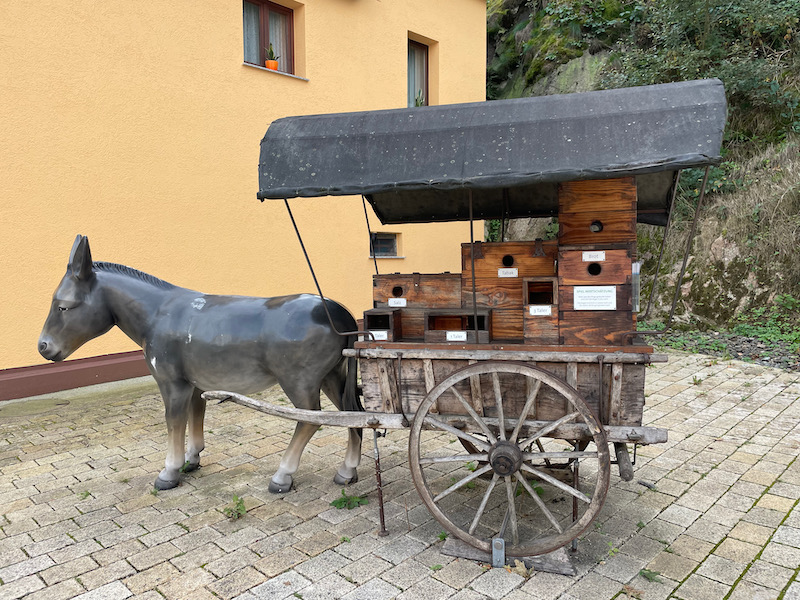
In the 15th and 16th centuries, foot soldiers protected cities from enemy invasions. They were paid by the princes and dukes and were well-known for their progressive and disciplined fighting style but sometimes also for their drinking. This is the town fountain, which depicts a foot soldier and a jester.
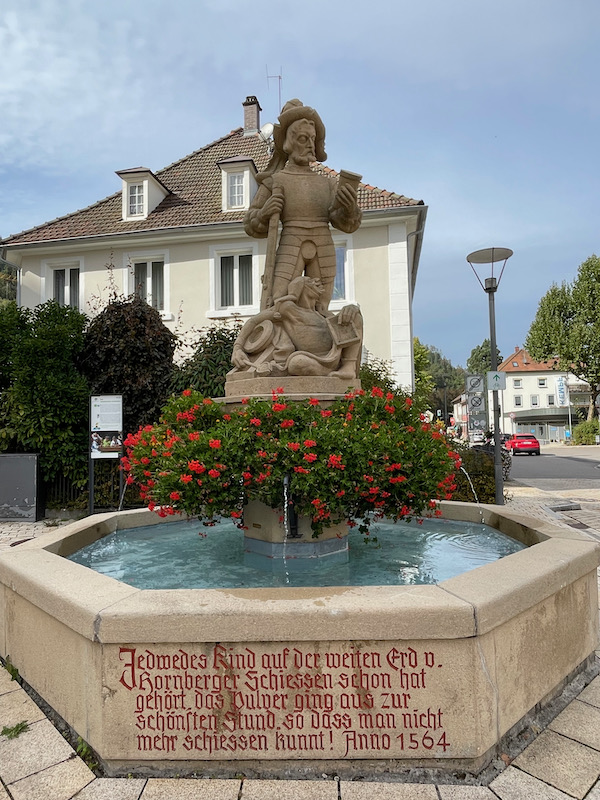
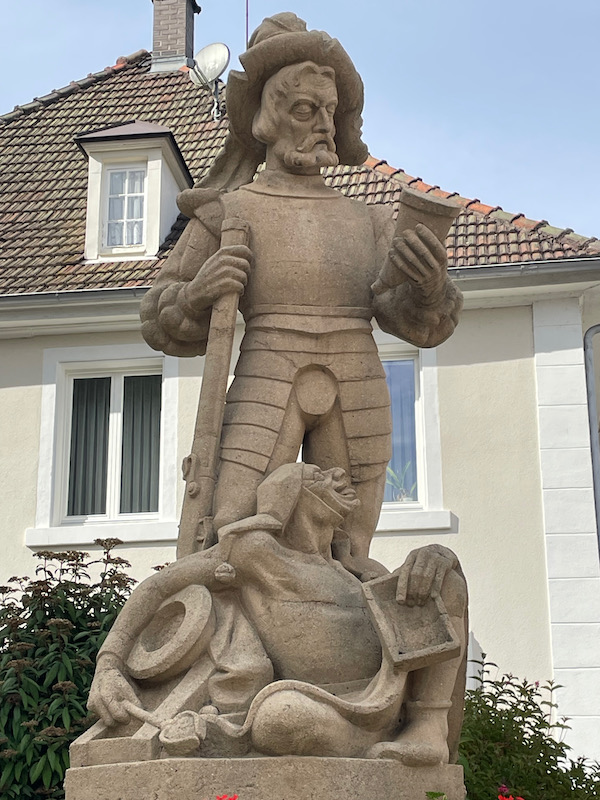
The "Zum Felsen" (a restaurant) is located where, in 1877, a local family brewery was started.
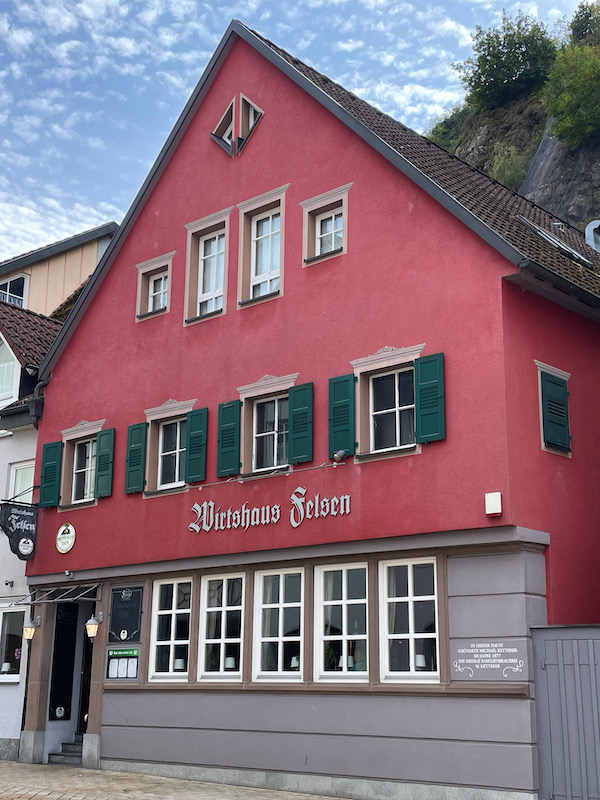
The St John the Baptist Church is just behind the town hall. Around 1300, a small Gothic church was built here, and the high Gothic choir of this church remains today. Around 1600, the nave was added to the original choir. It was damaged during the war and was restored between 1953 and 1955. The exposed ornamentation of the choir ceiling dates partly from the Gothic period, then from the Renaissance, and partly from the end of the 16th century.
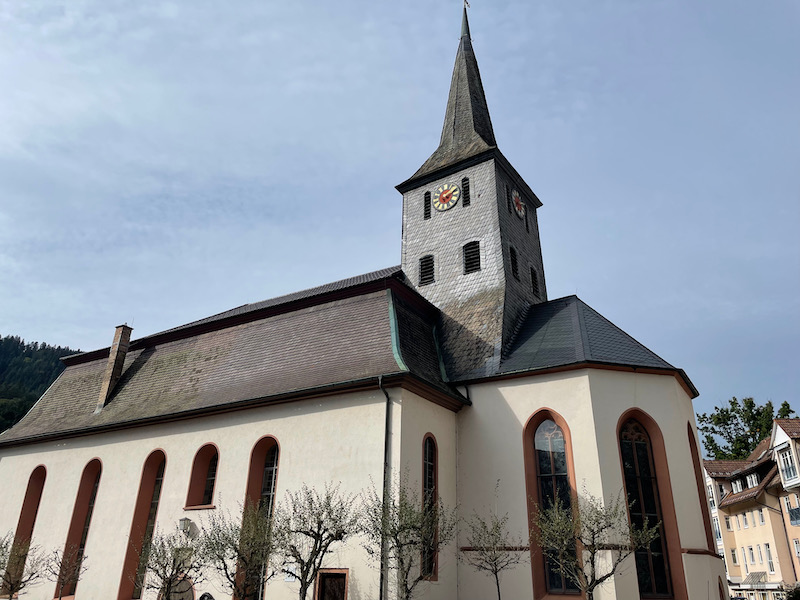
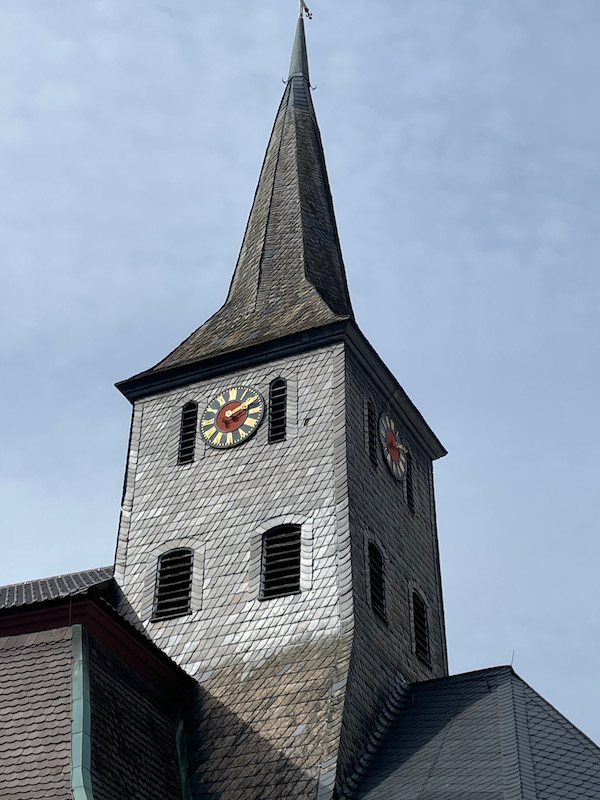
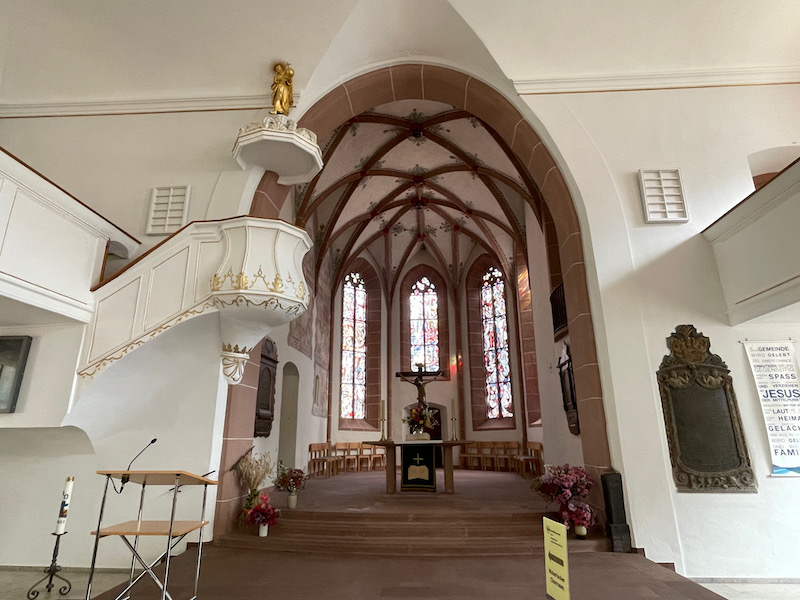
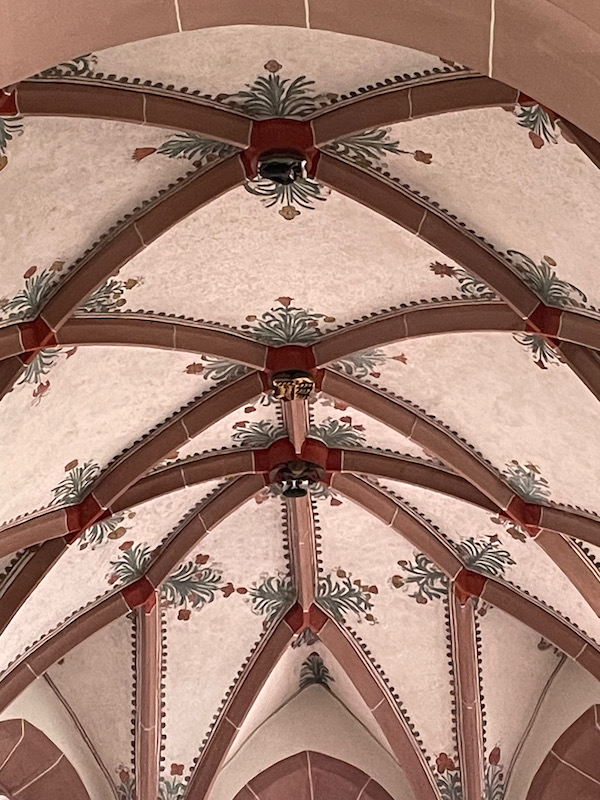
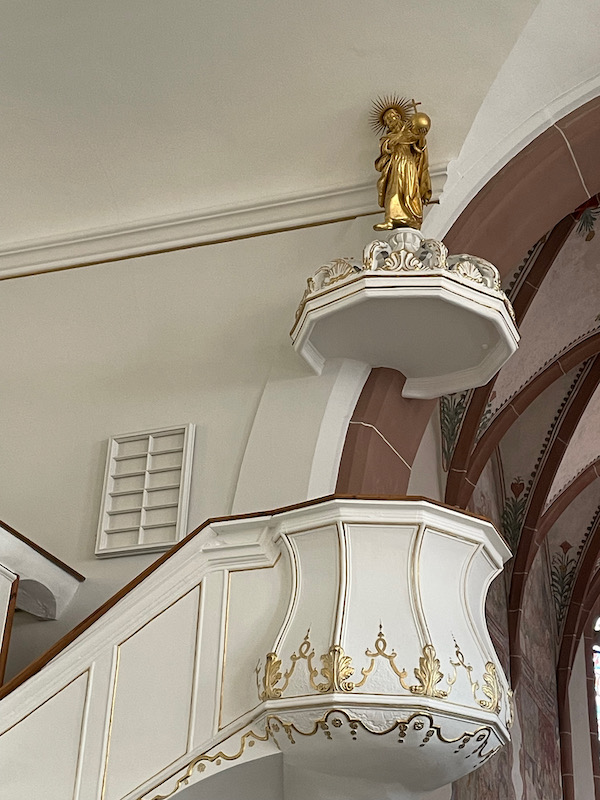
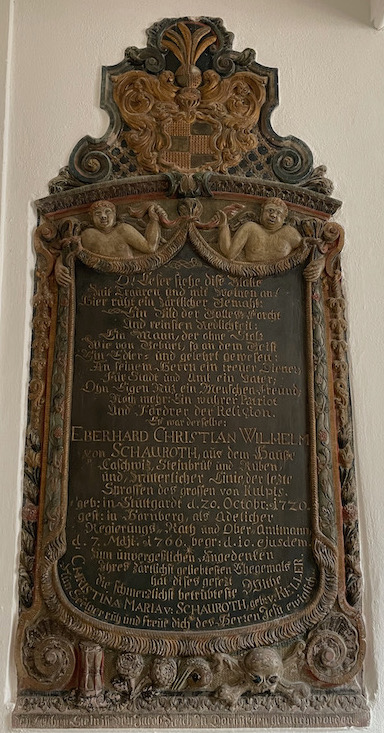
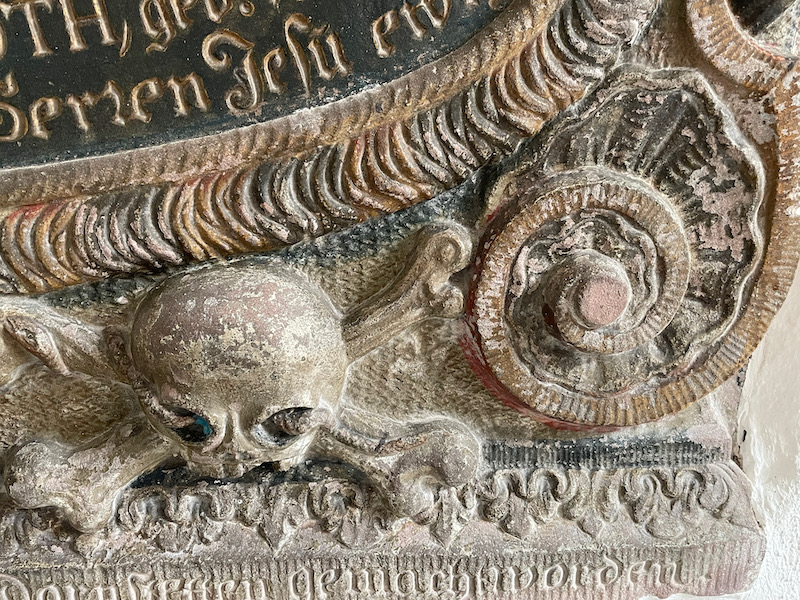
The stained-glass windows also date back to the 1955 restoration.
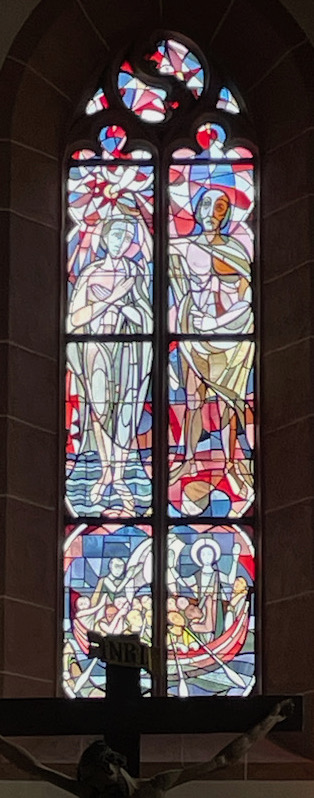

Interestingly enough, when the plaster from the choir walls was removed as part of the restoration, colors suddenly appeared and several frescoes were found that date back to around 1600. The first fresco supposedly shows Abraham being tempted and the 2nd one is the biblical story of Abraham and the three visitors at Mamre.
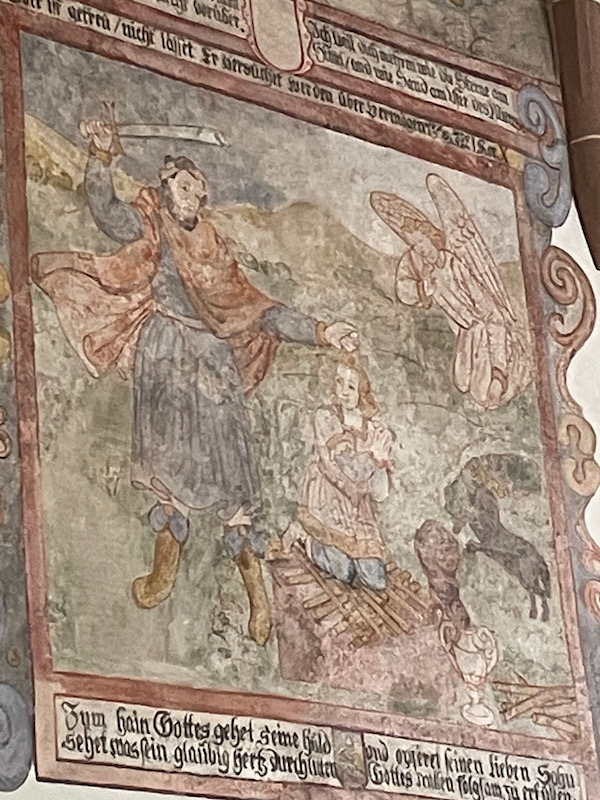
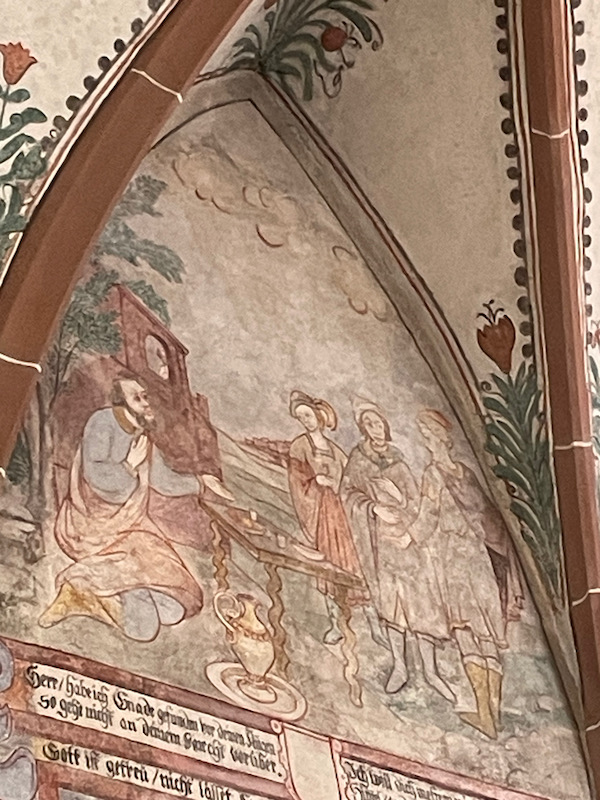
They have an open-air theater here where they do various shows (they are doing a production of Kinky Boots, the musical that has been on Broadway). The stage has reproductions of old houses (or at least, the façades). The last picture was taken from the castle looking down, and you can see the seating going up the hillside.
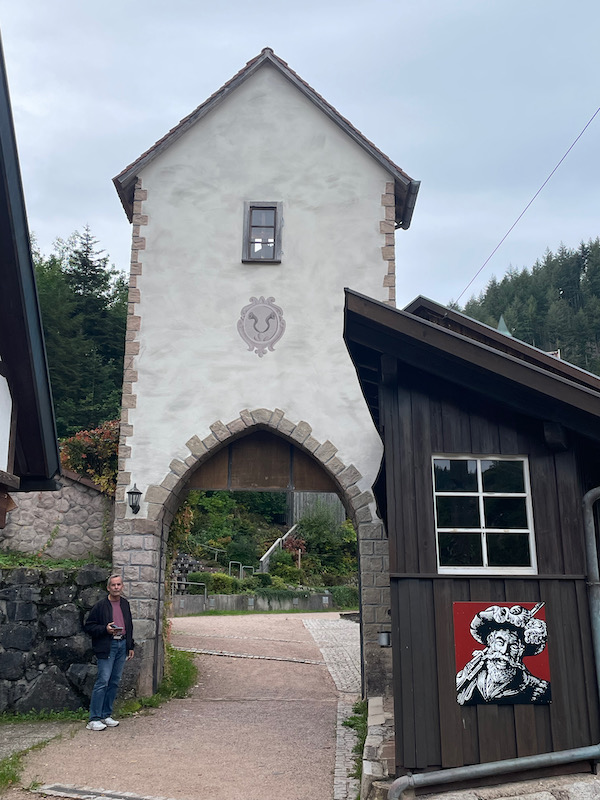
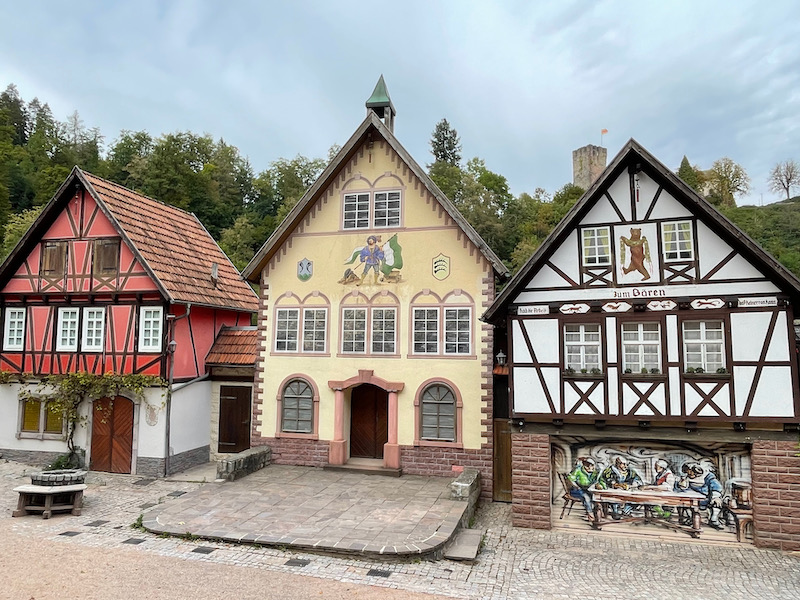
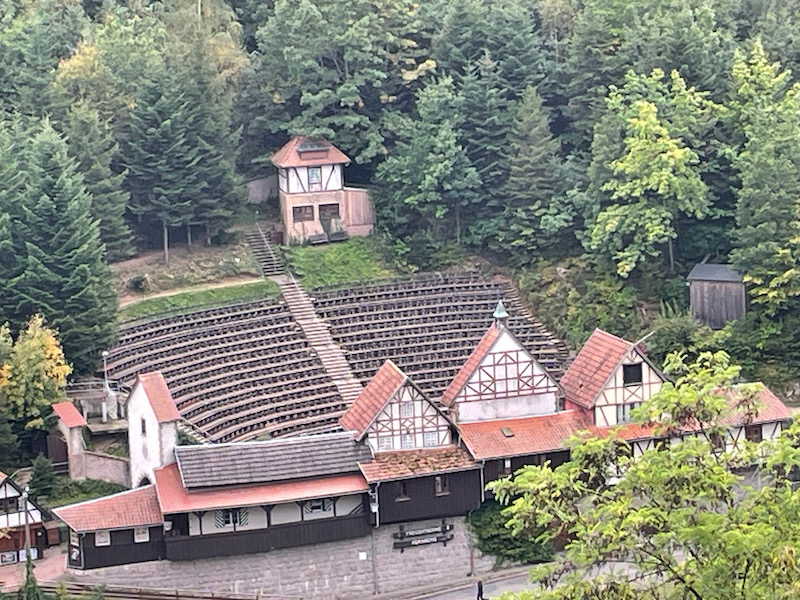
Around 1100, the first castle of the Lords of Hornberg was built and 100 years later, the Lords of Hornberg moved a bit higher to where a remaining castle tower is, overlooking the town below. The castle burned down in the 1600's but this castle tower remains.
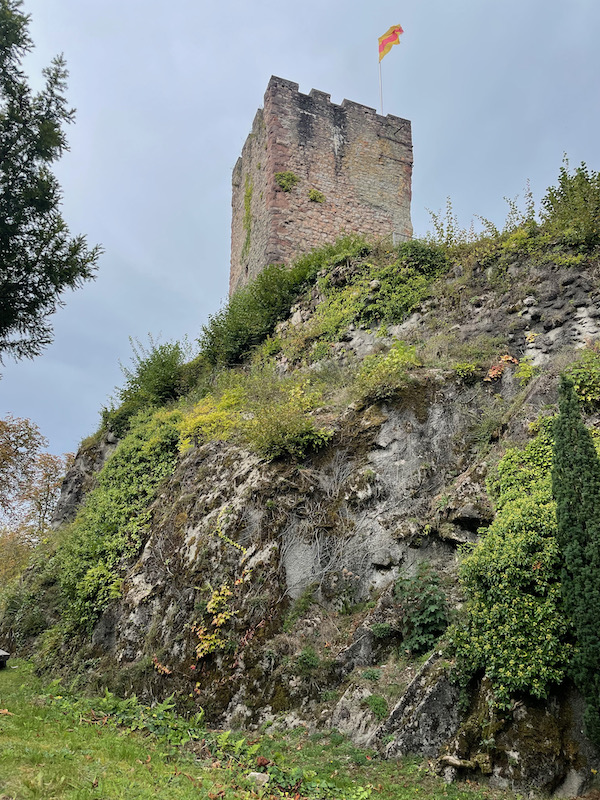
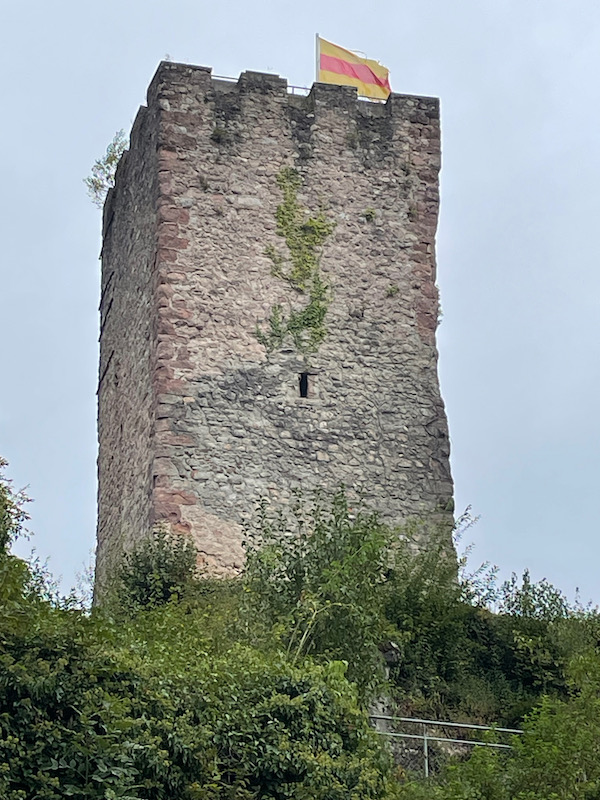
I must admit, hiking up to the top gives a great view of the town, the valley, and the hills around it.
